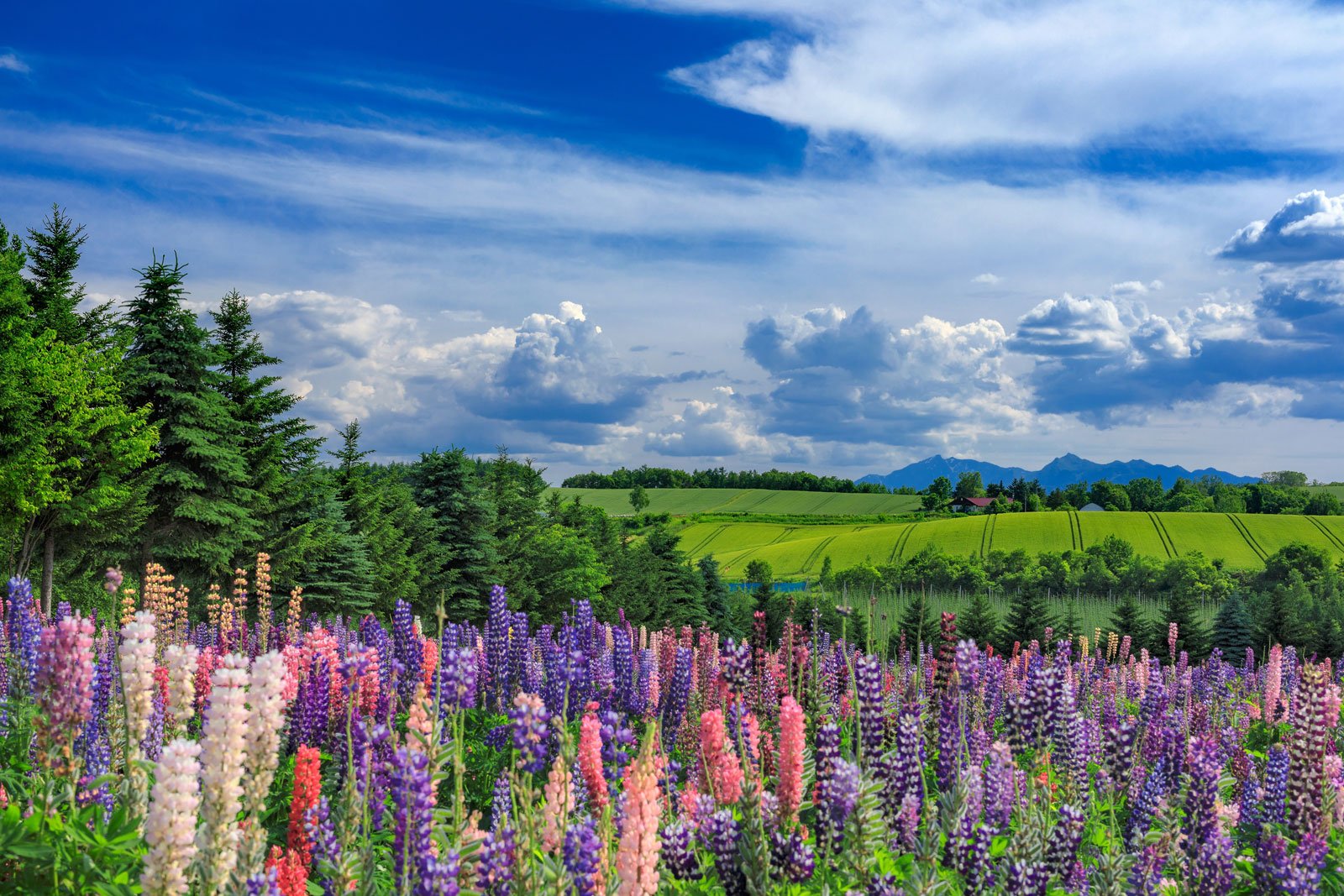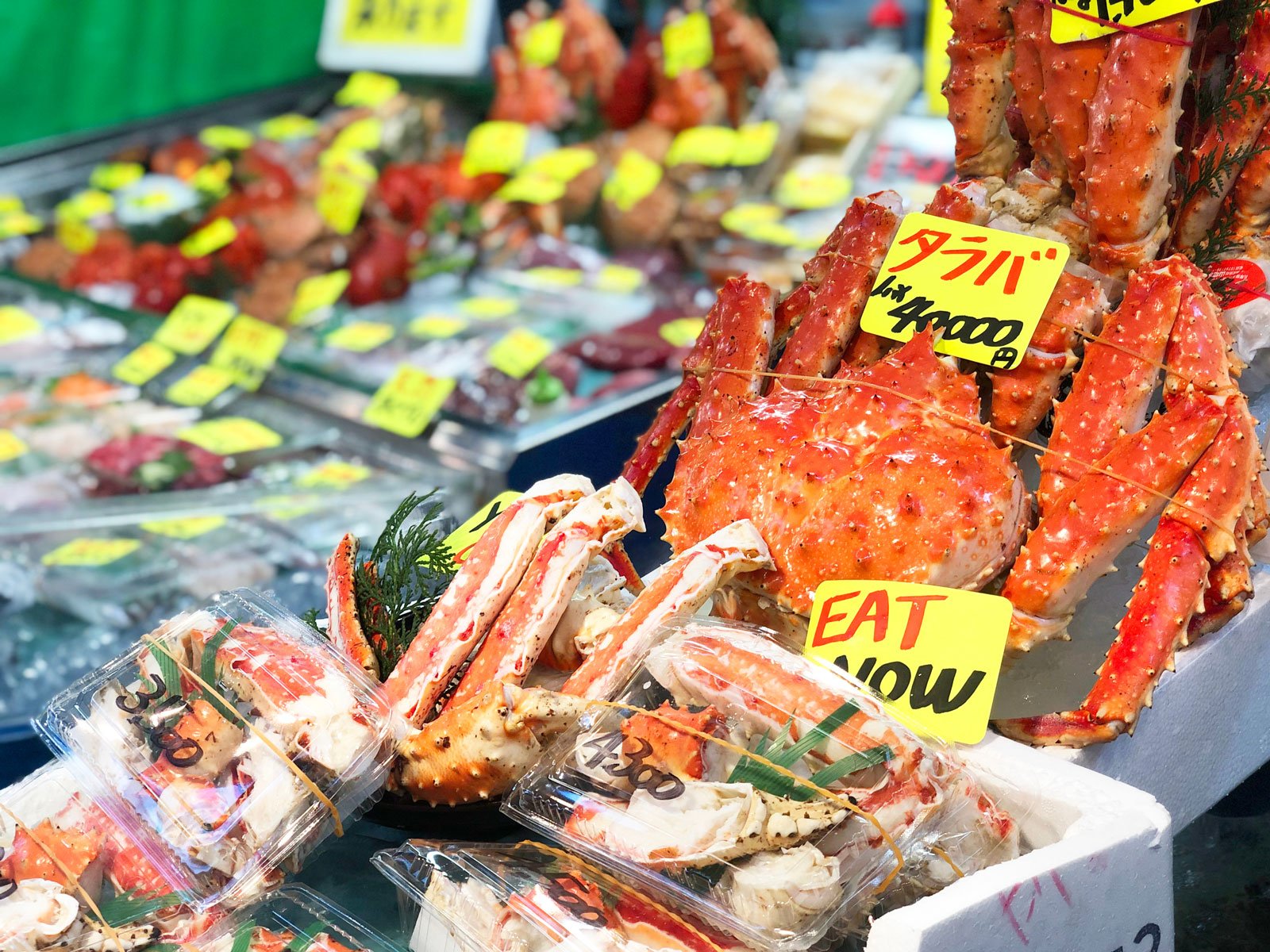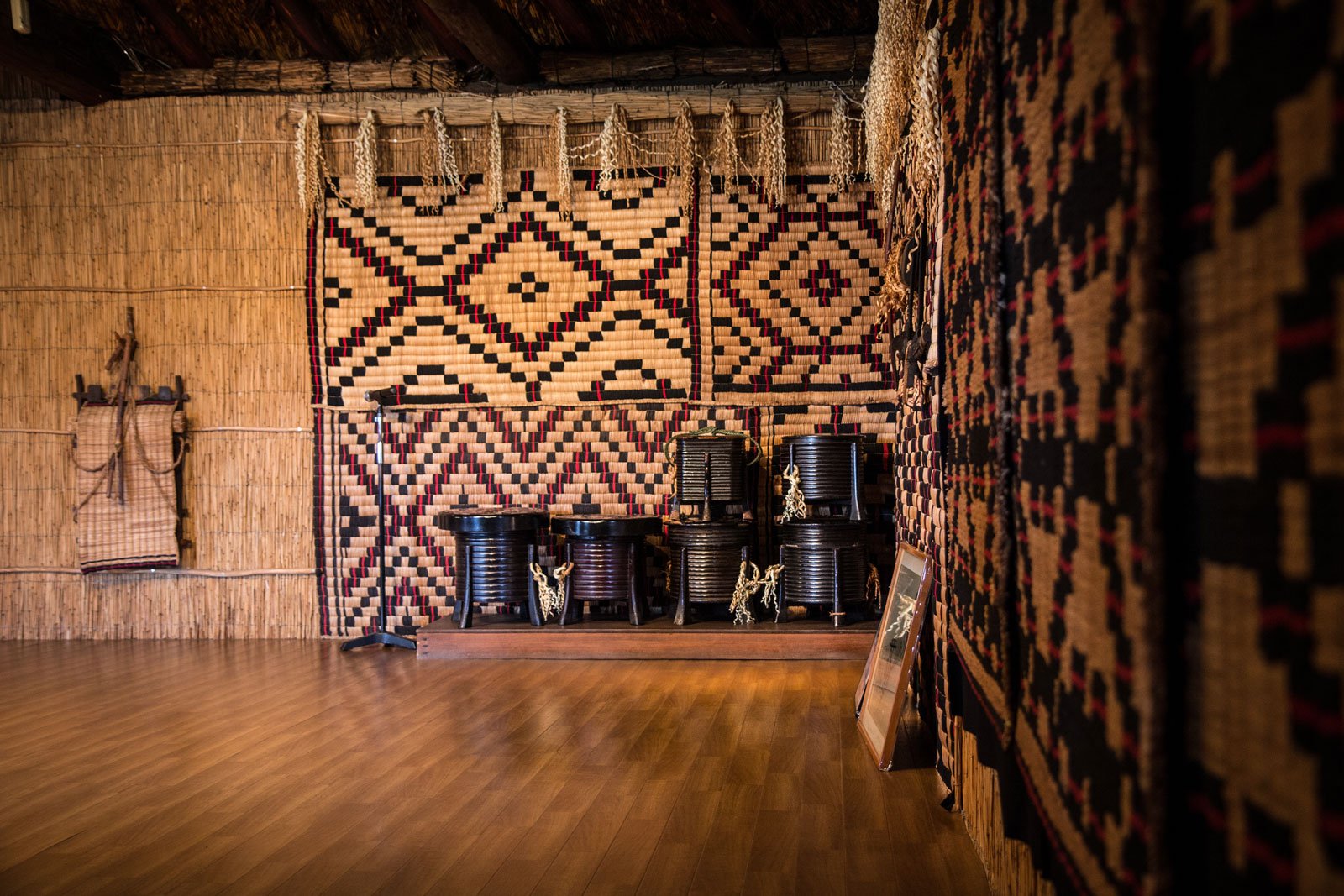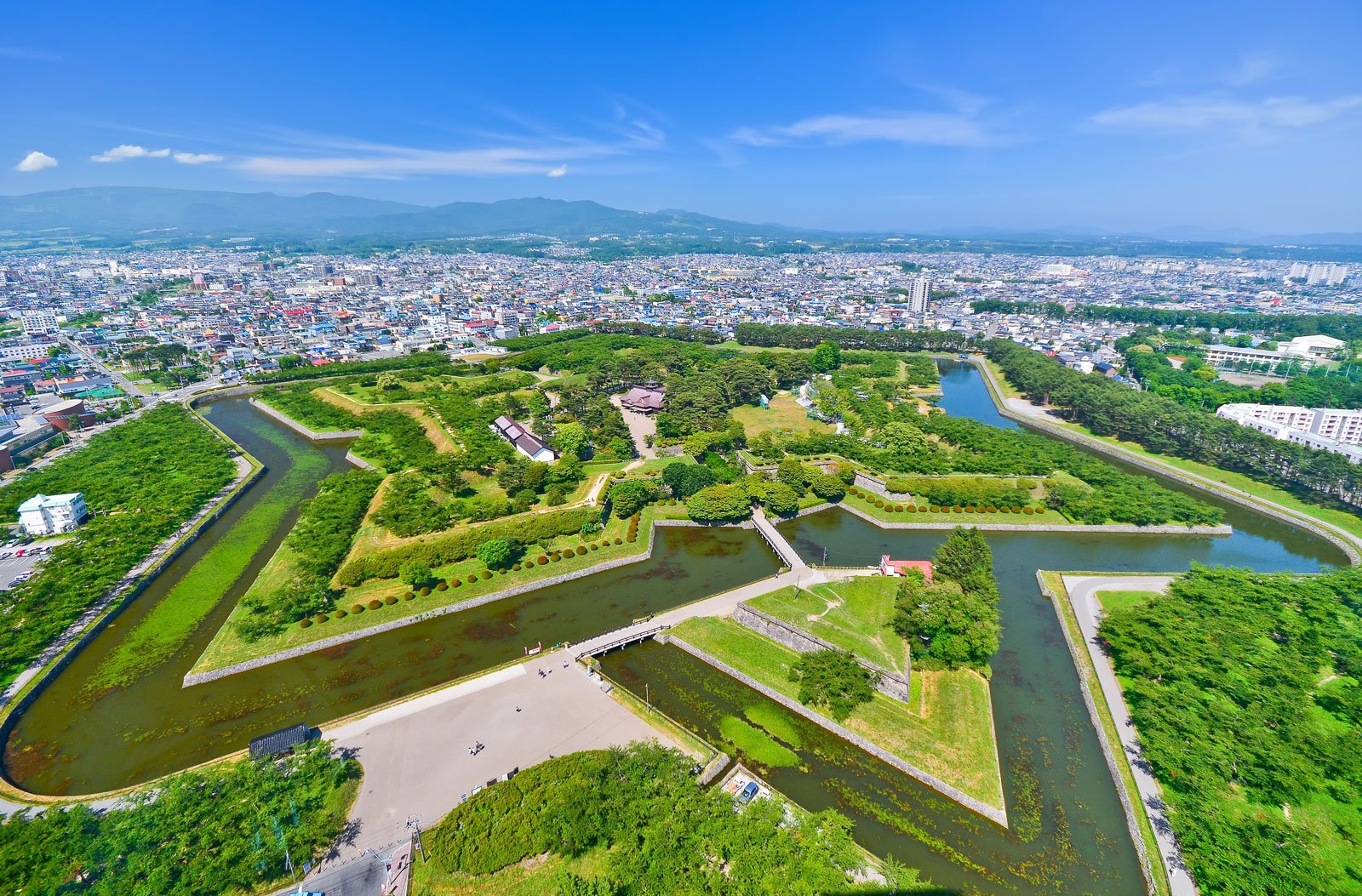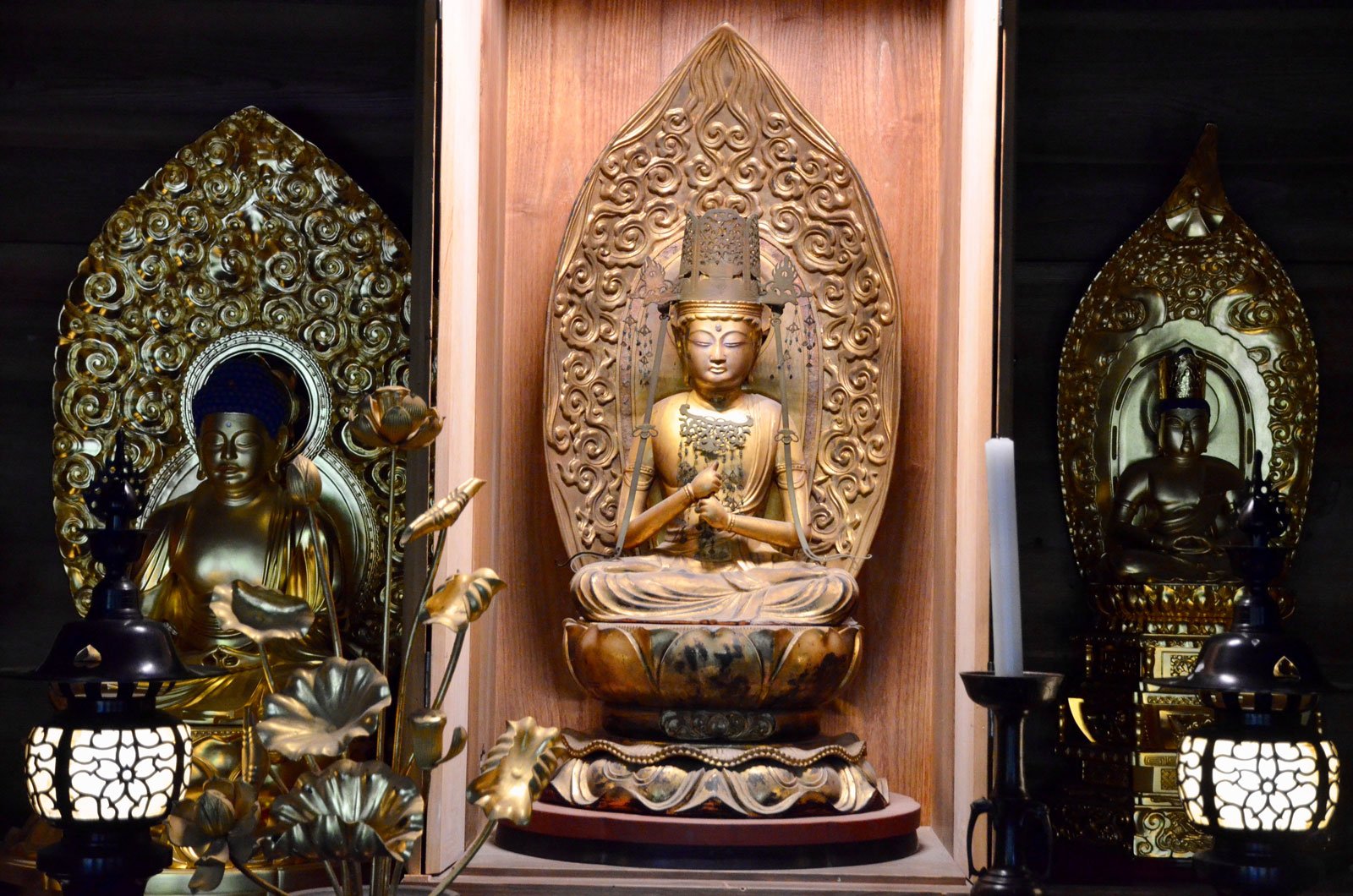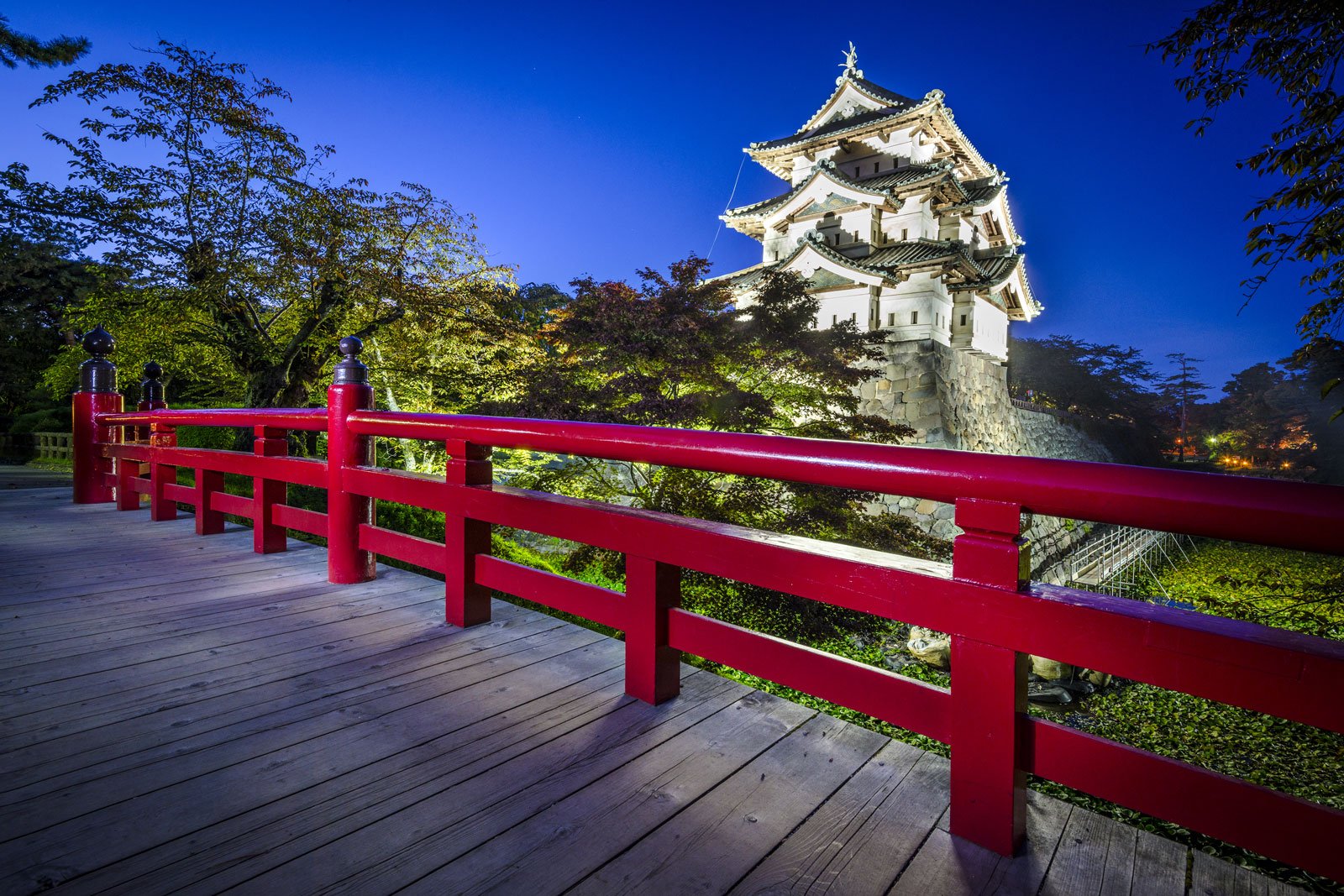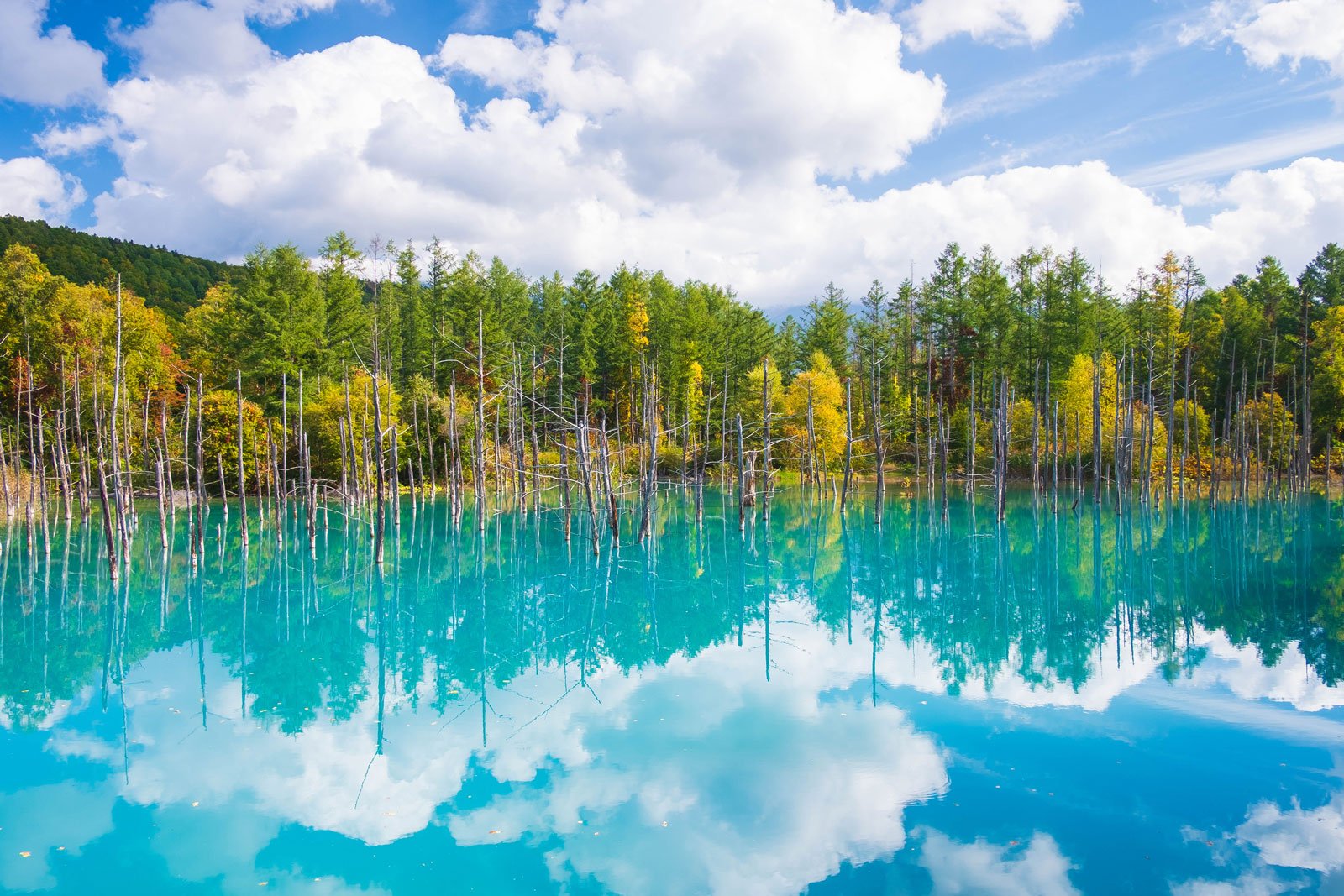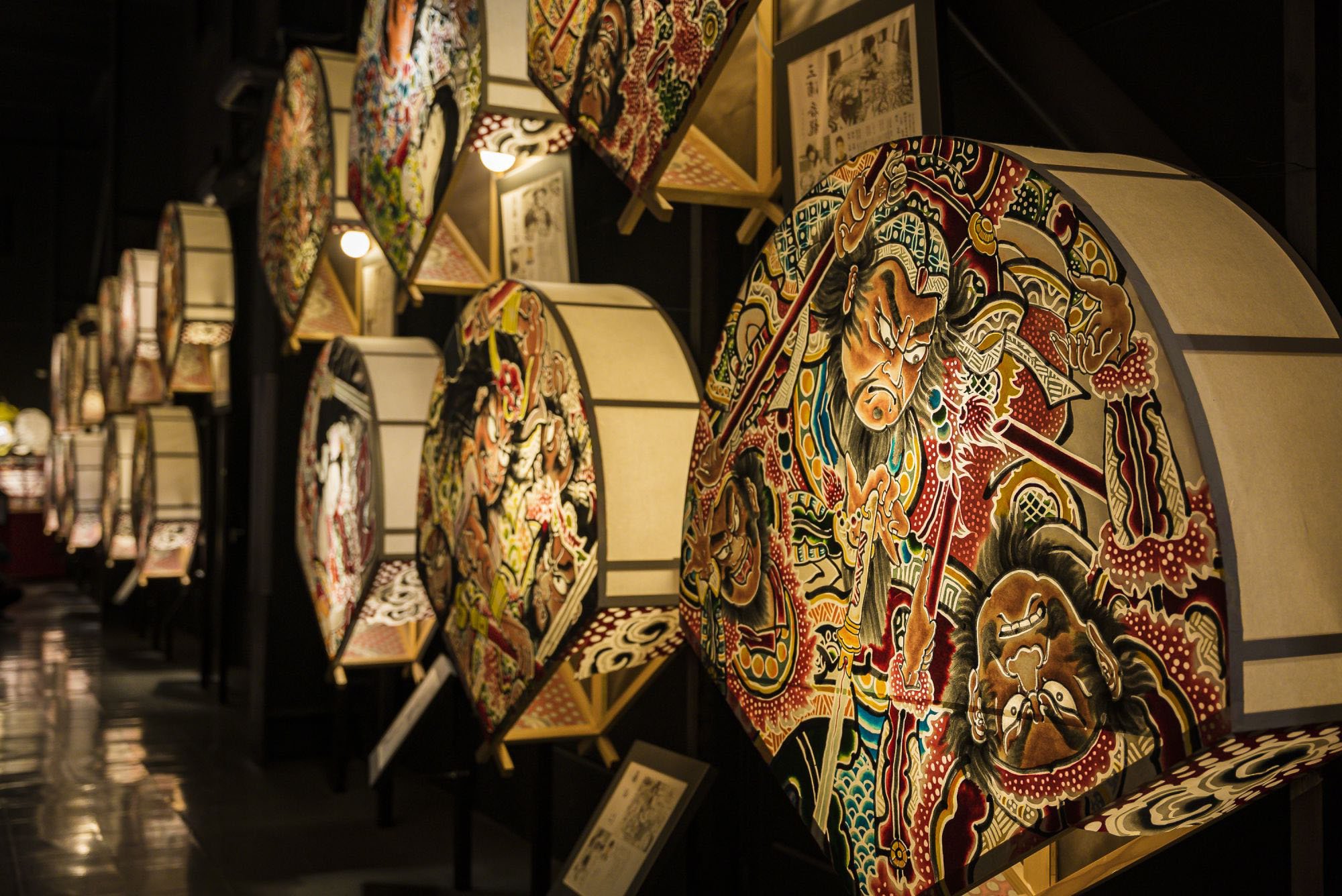
hokkaido & tohoku:
The road north
22 July - 07 august 2024
dr kathleen olive
Discover the path less travelled in northern Japan over its moderate summer, exploring diverse histories, indigenous culture, serene temples and exquisite natural beauty
OVERVIEW
The island of Hokkaido and Tohoku region offer a side of Japan not experienced by most travellers, as poet Bashō noted centuries ago in The Narrow Road to the Deep North. Hokkaido’s scenery forms a stunning backdrop for the indigenous Ainu culture, and the island offers art from the traditional to the contemporary, as well as exceptional seafood and locally-grown produce. Tohoku, in northern Honshu, is similarly diverse, from the vibrant Nebuta Festival, when enormous lantern floats parade through Aomori’s streets, to serene and UNESCO-listed mountain temples and celebrated views across Matsushima Bay.
This new itinerary commences in Sapporo, best known as a winter holiday base but with a mild summer perfect for exploring its modern history and spectacular scenery. Travelling into Hokkaido’s interior, fields of bright flowers form a backdrop to our visits, as we encounter the Ainu village at Noboribetsu and Hakodate’s historic sites.
Crossing the Tsugaru Strait by ferry, we explore Japan’s ancient past at a well-preserved Jomon archaeological site and celebrate in festive Aomori. At Hirosaki, we survey the samurai district and castle before travelling to Chuson-ji, the site of World Heritage-listed temples that exemplify the historical relationship between Buddhism and feudal lords. After discovering Matsushima’s Zen temples against an iconic backdrop of pine-covered islands, we travel by Shinkansen to Tokyo to conclude our tour.
The experience is rounded out by Japan’s refined and regional cuisine, and by the expertise of tour leader Dr Kathleen Olive, who is well-known for her courses on Japanese art and history.
TOUR LEADER
Dr Kathleen Olive is a well-known cultural tour leader, with over twenty years’ experience leading tours to Europe, North America, Australasia and Japan.
While Kathleen is particularly known for her expertise in Italy, she has recently pursued a longstanding interest in Japanese art, aesthetics and design. Since 2017 she has led eight sold-out tours to Japan and presented regularly on its history and art in popular lectures and online classes.
Details
DATES:
22 July - 07 August 2024
ITINERARY:
Sapporo - 4 nights
Furano - 2 nights
Noboribetsu - 1 night
Hakodate - 2 nights
Aomori - 3 nights
Ichinoseki (Hiraizumi) - 1 night
Matsushima - 2 nights
Tokyo - 1 night
PRICE:
$13,950pp twinshare
SINGLE SUPPLEMENT:
$1,950 for sole use of a double room
DEPOSIT:
$1,500pp at the time of booking
FITNESS:
Above moderate: long days; removing shoes at some sites; unfamiliar diet
GETTING THERE:
The tour starts at 5.00pm on Monday 22 July 2024, in the lobby of our hotel in Sapporo
GROUP SIZE:
Max. 16 people in a group
SOLD OUT - WAITLIST
-
Explore contemporary art and sculpture in Sapporo and Aomori
Encounter the now-protected Ainu culture and its traditional crafts, at the Upopoy National Ainu Museum
Admire the spectacular gold-covered Konjikido pavilion and elegant beauty of Chuson-ji temple
Understand the influence of the West following Japan’s era of isolation at Sapporo and Hakodate
Savour fresh seafood from Hokkaido’s pristine waters and sample artisanal cheeses and wines created in Furano
Experience the annual Nebuta Festival, with lantern floats, taiko drummers and dancers parading through Aomori
Discover the pine-clad islands and Zen temples of iconic Matsushima Bay
-
MONDAY 22 JULY – ARRIVAL (D)
An arrival transfer from New Chitose Airport Sapporo is included for all participants; contact us for further information. Meet your tour leader Dr Kathleen Olive and fellow travellers at 5.00pm in the lobby of our hotel in Sapporo, before departing by coach for Mount Moiwa. Here the Mount Moiwa Ropeway takes us three quarters of the way up the mountain, where we complete our journey to the summit by cable car. We enjoy a welcome dinner and admire panoramic views of Sapporo and the Ishikari Plain, before returning to the hotel. Overnight Sapporo.
TUESDAY 23 JULY – HISTORIC SAPPORO (B, L)
Originally a simple trading post with the indigenous Ainu people, Sapporo city was established by the Meiji government and by 1868 had replaced Hakodate as the capital of Hokkaido. The city’s grid-pattern streets and avenues are modelled after Kyoto, as we understand on our walking tour this morning. We pass by the historic Clock Tower, the American neo-baroque Hokkaido Government Office and the Botanic Garden. We continue to the Hokkaido Museum for an overview of the history, culture and natural environment of Hokkaido, and of its Ainu people. After lunch, we explore the Historical Village of Hokkaido, an open-air museum consisting of 52 relocated and restored historic buildings of the Meiji and Taisho Periods (1861–1926). The village is divided into four distinct areas – the Town, Fishing Village, Farm and Mountain Villages – to illustrate the lifestyle and industries of that time. Returning to the hotel by coach, the evening is at leisure. Overnight Sapporo.
WEDNESDAY 24 JULY – ART IN SAPPORO (B, L)
This morning we travel to Sapporo Art Park, where the Sapporo Sculpture Garden and Sapporo Art Museum nestle in a verdant forest location. The Art Museum’s collection holds work by artists closely associated with Hokkaido, while the sculpture garden displays pieces by leading Japanese and international sculptors that sit sympathetically in the natural environment. We explore the museum and 7.5-hectare sculpture garden before lunch in the museum cafe. After lunch, we return to the city for an afternoon and evening at leisure. Overnight Sapporo.
THURSDAY 25 JULY – OTARU (B, L)
Today we head to Otaru, a small harbour town and an important fishing port since Hokkaido’s late nineteenth-century colonisation. Cobblestone streets line the historic canal where old warehouses have been restored as shops, restaurants and museums. We visit the City General Museum, housed in the old Otaru warehouse, and adjacent Canal Building, with its perspective on regional history and nature from the settlement by the Ainu to the Edo-era herring industry. Like Venice, Otaru is a city of canals, maritime trade – and glassmaking, producing floats for fishing nets and oil lamps. We visit the Kitaichi Venetian Art Museum, modelled in Italian marble after Venice’s Palazzo Grassi and with over 3,000 pieces of Venetian glass, furniture and art. There is time for lunch and to wander among the well-preserved Western-style merchant buildings on Sakaimichi Street. The climate and natural features around Otaru are similar to the Scottish Highlands, providing an ideal environment for whisky production. Masataka Taketsuru, the founder of Nikka Whisky, was first Japanese person to master the art of whisky-making in Scotland, returning to Japan to establish the Yoichi Distillery in 1934. We tour the distillery and enjoy a wee dram before returning to Sapporo for an evening at leisure. Overnight Sapporo.
FRIDAY 26 JULY – WINE & CHEESE (B, L, D)
We check out and travel east to Furano, an agricultural region in central Hokkaido known for its dairy, wine and abundant fresh produce. At the Furano Cheese Factory we observe the production of local Camembert-style cheeses and sample a black cheese coloured by squid ink. Wine has been produced in Furano since 1972 when the Furano City Grape and Fruit Tree Research Institute was established to investigate the viability of cultivating local grape varietals. We enjoy a guided tour of the vineyard at Furano Winery and sample a selection of wines before lunch at Furano Wine House, featuring delicious local produce. After lunch we head to our hotel and check in. Dinner is in the hotel. Overnight Furano.
SATURDAY 27 JULY – FIELDS OF FLOWERS (B, L)
During summer, the fertile fields around Furano are carpeted with blooms grown for commercial use. This morning we visit Farm Tomita, where the lavender creates a colourful spectacle against the backdrop of the Tokachi Mountains. We continue to the Goto Sumio Museum to view the works of Sumio Gota, illustrator and master of Nihonga or traditional Japanese painting. Reflecting the pre-eminence of nature on Hokkaido, the monumental works are painted with pigments extracted from natural minerals and ores such as lapis lazuli, crystal and malachite. At nearby Biei we drive along the spectacular Patchwork Road, fields laid out in squares to resemble an enormous quilt, and stop to admire the scenery at the Hokusai Hills Observatory Park. After lunch, we take a stroll through a larch forest to the Blue Pond. Named for its deep hue, formed by minerals dissolved in the water, it forms part of an erosion control system for Mount Tokachi. Returning to Furano, the evening it at leisure. Overnight Furano.
SUNDAY 28 JULY – AINU CULTURE (B, L, D)
After checking out, we travel south to the Upopoy National Ainu Museum and Park. Here we enjoy a lunch in the museum restaurant that fuses traditional Ainu ingredients with modern cooking techniques. In the new museum, we learn about the Ainu people of Hokkaido, Sakhalin and Kuril Islands. A distinctive group with an ancient language and culture unrelated to Japanese, the Ainu have been ignored and at times suppressed. Here, the oral traditions of their way of life, history, spiritual beliefs, arts and crafts, and traditional dance are now being carefully recorded. Following our exploration of the museum and parklands, we travel along the foreshore to the onsen town of Noboribetsu, where after dinner you may enjoy the soothing waters of the three types of hot springs available at the hotel. Overnight Noboribetsu.
MONDAY 29 JULY – TO HAKODATE (B, L, D)
This morning after checking out, we depart for Hakodate, one of the first Japanese ports opened to Western trade during the Meiji Restoration. After lunch in Hakodate, we visit Fort Goryokaku, a large fortification built at the end of the Edo Period to counter Western military threats. Based on a French design, the fort’s five-pointed star allowed for increased gun battlements and greater fire power, and it witnessed the final battle in the Civil War between Shogun and Emperor in 1869. The fort was soon turned into a public park, with over 1,000 cherry trees along its moats. After checking in to our hotel, there is an excursion up Mount Hakodate by ropeway to enjoy the views over dinner at the summit restaurant. Overnight Hakodate.
TUESDAY 30 JULY – HAKODATE (B)
An early start today allows us to experience the bustling atmosphere of the morning market, with a vast range of seafood and fresh produce from across the island. After breakfast at the hotel, we embark on a walking tour of the Hakodate Bay waterfront and explore the remaining red-brick warehouses of early international traders. The late nineteenth century brought an influx of merchants to Hakodate from the West, Russia and China, as we see in Motomachi’s Russian Orthodox Church, Old British Consul and Chinese Memorial Hall demonstrate. We return to the hotel after our tour, for an afternoon and evening at leisure. Overnight Hakodate.
WEDNESDAY 31 JULY – TO AOMORI (B, D)
Today we depart by ferry, crossing the Tsugaru Strait between Hokkaido and Honshu to Aomori, a journey of 3 hours and 40 minutes. Following disembarkation at Aomori Port Ferry Terminal, we transfer to the hotel and check in. There is a group dinner this evening. Overnight Aomori.
THURSDAY 01 AUGUST – AOMORI ART & CULTURE (B, L)
Today we survey local art and history, beginning at the Aomori Museum of Art. It showcases contemporary works by artists from the Aomori Prefecture in a striking building designed to resemble the adjacent World Heritage Jomon-era site. A huge room with 19-metre-high ceilings houses Marc Chagall’s enormous backdrops designed for Massine’s 1942 ballet Aleko. Nearby, the Sannai Maruyama Archaeological Site is one of the Jomon Period’s best preserved and most complete villages (13,000–300BCE), discovered by accident during surveys for a baseball field and now offering recreations of some 700 pit-dwellings, long houses and burial pits. Jomon material culture is on display in the Sanmaru Museum, from inventive clay figurines to large ritualistic jade beads. After lunch, we visit the Nebuta Warasse Museum, where we learn about the annual Nebuta Matsuri. This 300-year-old traditional festival, with its carefully crafted floats, is one of Japan’s most famous and the museum allows us to experience the sights and sounds of the parade at close quarters. Returning to the hotel, the evening is at leisure. Overnight Aomori.
FRIDAY 02 AUGUST – HIROSAKI & THE NEBUTA FESTIVAL (B)
This morning we travel inland to Hirosaki, the capital of the Tsugaru region during the Edo Period. Surrounded by a large park planted with 2000 cherry trees, Hirosaki Castle (1611) was a five-storey fortification with defensive walls, a moat and watch towers. It was rebuilt in 1810 after a lightning strike. We depart the seat of the feudal lord for the former samurai district, to visit the simply furnished and unadorned Iwata Family Residence and the well-appointed Ito House, residence of the Shogun’s doctor. There is time to relax back at our hotel before we attend the Nebuta Festival this evening. The largest of the three great festivals of the Tohoku region, the Nebuta Matsuri is a Japanese fire festival held every August and is a highlight of our tour. From our seats lining the parade route, we view the spectacular lantern floats depicting mythical figures, ancient warlords, gods and Kabuki actors. Painstakingly constructed by locals over the course of a year, the floats are accompanied by taiko drums, musicians – and colourful dancers chanting rassera rassera, an invitation to join the festivities! Overnight Aomori.
SATURDAY 03 AUGUST – HIRAIZUMI WORLD HERITAGE SITE (B, L, D)
We check out and travel by Shinkansen to Hiraizumi. After lunch, we explore the town’s eleventh and twelfth-century temples. A forest path leads to Chuson-ji, where the Konjikodō is covered in gold leaf and inlaid with mother of pearl in homage to the Amida Buddha. We continue to the garden of Motsu-ji, created in the eleventh century in a sakutei style to represent Paradise. Centred around a large pond with two stone islands, it evokes a serene coastline. Calling in at Takadachi Gikeido, we learn the tragic story of hero Minamoto Yoshitsune before we visit the Hiraizumi Cultural Heritage Centre. There is dinner this evening. Overnight Hiraizumi.
SUNDAY 04 AUGUST – TO MATSUSHIMA (B)
Today we check out and depart by coach for Matsushima, whose bay of pine-clad islands has been named as one of Japan’s three most scenic views. On arrival, we follow the long straight path, flanked by cedar trees, to Zuiganji Temple, known for its blend of Kamakura and Zen architectural styles. Its beautifully gilded and painted fusuma (sliding doors) are held in the small Zuiganji Art Museum. Next door is Entsuin Temple, built to honour the untimely death of Mitsumine Date, grandson of a legendary samurai, and with a stone garden that symbolises the islands of Matsushima Bay. The Mausoleum houses a statue of the young Lord Date on a white horse, surrounded by the retainers who committed ritual suicide upon his death. The interior is decorated in gold leaf, with ornate patterns and Christian symbols such as crosses, hearts and spades – and even a painting of a rose brought back from papal Rome. After free time for lunch, we check in to the hotel and enjoy an evening at leisure. Overnight Matsushima.
MONDAY 05 AUGUST – MATSUSHIMA BAY (B)
This morning we take a cruise to enjoy the incredible natural splendour of Matsushima Bay and its many islands from the water. On a small islet we visit Godaido Temple, the symbol of Matsushima and built in 807 CE. While the statues of the Five Great Kings of Wisdom enshrined here are presently housed in the Zuiganji Art Museum, they are returned to the island for display once every 33 years. There are tea and sweets overlooking the bay at the Karantei Tea House before we admire the golden fusuma (sliding doors) in a reception house for envoys of the shogun, princesses and feudal lords’ wives. The small Matsushima Museum displays the armour, weapons and other artefacts of this aristocracy. Over a traditional red bridge to Oshima Island lie meditation caves carved in the rock, once used as monks’ retreats, and an old cemetery. The later afternoon and evening are at leisure. Overnight Matsushima.
TUESDAY 06 AUGUST – TO TOKYO & TOKYO NATIONAL MUSEUM (B, D)
Today we check out and board the Shinkansen at Sendai for Tokyo, where we transfer to the National Museum. The museum holds a staggering series of collections that trace the history, archaeology and culture of Japan’s many artforms, adding a valuable perspective to the sites we have seen during our travels. Lunch is at leisure in the museum complex before free time to further explore the collections, from hanging scrolls and calligraphy to kimono, sculpture, Chinese antiquities and woodblock prints. We head to the hotel and check in before gathering for our farewell dinner this evening. Overnight Tokyo.
WEDNESDAY 07 AUGUST – DEPARTURE (B)
Our tour arrangements conclude after breakfast in the hotel. Our partner Mary Rossi Travel would be pleased to assist with your onward travel arrangements, including flights, transfers and international travel insurance.
-
The Sapporo Grand Hotel 4* Sapporo, 4 nights
Shin Furano Prince Hotel 4* Furano, 2 nights
https://www.princehotels.com/shinfurano/
NB: hotel offering an onsen or thermal bathing experience
Noboribetsu Grand Hotel 4* Noboribetsu, 1 night
https://www.nobogura.co.jp/en/
NB: hotel offering an onsen or thermal bathing experienceHakodate Kokusai Hotel 4* Hakodate, 2 nights
https://www.hakodate-kokusai.jp/en/
Hotel JAL City Aomori 3* Superior Aomori, 3 nights
https://www.aomori-jalcity.co.jp/en/
Bellino Hotel Ichinoseki 3* Superior Ichinoseki (Hiraizumi), 1 night
https://bellino.jp/ (official website, Japanese only)
Matsushima Century Hotel 3* Superior Matsushima, 2 nights
https://ssl.centuryhotel.co.jp/lg_en/
Asakusa View Hotel 4* Tokyo, 1 night
https://www.viewhotels.jp/asakusa/
NB: hotels of a similar standard may be substituted.
A limited number of Japanese-style (i.e. tatami mat) rooms are available on request in some hotels - contact us at time of booking.
For historical reasons, true double-bedded rooms for dual occupancy are rare in Japan; instead, the norm is two generous twin-beds joined together (a so-called “Hollywood twin”).
-
16 nights’ accommodation at 4* and 3* Superior hotels
All breakfasts and 16 lunches or dinners
All ground transport, boat and ferry transfers, Shinkansen and luggage transfers, guided tours and entrance fees to sites as mentioned in the itinerary, and tipping
Expertise of and commentary by Australian tour leader throughout, including a set of pre-recorded lectures
Expertise and assistance of a Japanese-speaking national guide, throughout
-
A $1,500 deposit is required at the time of booking to confirm your place on this tour.
We will invoice you for the balance due on 08 May 2024.
-
When you book on one of tours, we ask you to accept our terms and conditions.




